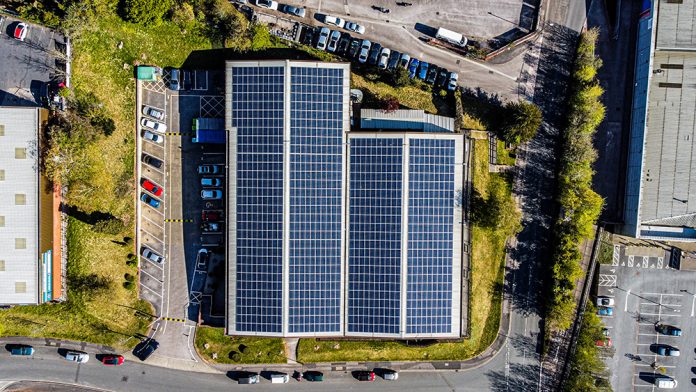‘Artificial intelligence (“AI”) is making renewable energy more predictable, reliable and efficient. Simon Nicholls looks at how it’s changing the way we generate, distribute and use renewables. It could also help win the battle against the sceptics who cling to the intermittent nature of renewables as their fundamental flaw. Windy and sunny days come and go but now we can harness their full potential with AI.’
Renewable energy has a problem. Well, to be accurate, it has two problems. It can be unpredictable and unreliable, and in any debate about renewables these two issues will be raised. You’ve heard the claims.
“But it only works when the wind blows.”
“We can’t rely on it to generate the power we need.”
These are points sceptics will repeatedly use to argue that a renewables-dominated future cannot give us the energy security and supply we need. And of the many arguments used against renewables, unpredictability and unreliability stand out from the rest because they are inherently part of the character of renewables. They’re also out of our control.
We can address other problems – we can improve recycling of solar panels, we can improve the efficiency and power density of solar modules. But we can’t make the sun shine or the wind blow, points that were made by the anti-renewables lobby in 2021 when severe storms caused blackouts in Texas.
“Wind and solar got shut down,” said Texas Governor Greg Abbot. “They were collectively more than 10% of our power grid, and that thrust Texas into a situation where it was lacking power on a state-wide basis.” Images of frozen turbines did the rounds on local TV and social media.
In fact, every kind of power generation froze or broke down as Texas faced exceptionally low temperatures. In a state where energy use and production are concentrated on dealing with extreme heat, the cold hit hard. Energy use spiked just as production slowed. The grid fell apart as it struggled to cope with conditions it was not designed for.
Better predictions and forecasting could help avoid a repeat. The Texas grid did not make use of AI in its crisis management or even its forecasting. It couldn’t stop the wind turbines from freezing but it could have predicted that they would freeze, and suggested what could be done about it.
It will not be possible to pin the blame for events like the Texas blackouts on renewables for much longer. Their inherent unpredictability and unreliability are becoming less of problem: artificial intelligence is already mitigating against these problems. In Denmark, pioneering use of AI has helped it generate half of its electricity from wind and solar, becoming the world’s largest producer of wind-generated power. In the UK, December 2023 was the 15th month in a row where zero-carbon generation produced more than fossil fuel generation.
The UK has reduced the involvement of coal in our generation mix by more than 97% since 2013. Power provided from coal was responsible for only 1% of electricity generation in 2023, compared to 2018 when coal represented 5.1% and 2013 when 39.6% was generated by coal – showing the significant reduction that is taking place. Progress in terms of rolling out renewable energy; the next stage will be deployment of AI-integrated load balancing and forecasting.
As a result of an increased need for accurate demand and generation forecasting, AI allows us to know how much power renewable sources will produce and how much people need. It predicts when maintenance is required, when equipment will fail, and it will help realise widespread distributed power generation. As microgrids (mini power plants that produce energy near to where it’s used) increase in number, AI will manage and optimise their connection to the national grid.
Broadly speaking, AI is good at three things: (i) processing and analysing huge amounts of data, far more than a human could ever manage; (ii) spotting patterns in that data; (iii) making recommendations about what to do with those patterns. The foundation for success is data and not just data, but good data. If we’re going take the deployment of renewables to the next level, as a society and as individual businesses, we’re going to need to become collectors and traders in data.
Data is everywhere. It’s estimated that the world’s wind turbines produce 4bn data points every year. Every solar install, every smart meter, every heat pump produces data and that’s where AI will add profound value.
AI will be instrumental in updating our national grids, taking them from the passive structures they were originally conceived as in the 19th century to intelligent smart grids, configured to handle the two-way flow of power and data.
The World Economic Forum estimates that by 2050 13% of global power will be produced by small-scale solar alone. Today that figure is 4%. These microgrids, which will also use wind, water and geothermal power, are at the heart of a distributed energy system. But we will still need national grids, and these will need to have significantly more capacity than they do today.
More infrastructure requires more maintenance, so AI will be needed to predict when something needs fixing, and spot problems before they become serious. Drones already inspect infrastructure, such as power lines, and use AI to recognise issues such as overgrown vegetation or damaged steelwork.
This advancement does not come without risks. AI developing consciousness is often referred to as posing the single greatest existential threat to humanity we have ever faced, but that is not the problem here. Instead, it is the digitisation of energy networks that create risk.
Cyberattacks on energy infrastructure are a feature of modern warfare – Ukraine has been fending off Russian attacks on its grid since 2015 – because energy infrastructure creates security. Distributed energy production is more resilient to attacks than centralised production; it’s a lot harder to take control of multiple small power plants than one large one. But the adoption of smart grids that rely on digital technology, and AI, opens a door to malevolent hackers; interfering remotely with energy infrastructure is a lot easier than trying to take it by force.
AI also raises the issue of energy use. The intensive computing required to train AIs uses a lot of energy, both for the computers and their cooling. To maintain credibility, and to avoid arming the opponents of renewables with another weapon, we must ensure the energy used to run these systems is, itself, renewable, and that the systems are as efficient as possible. In this instance, AI can be used to develop the most energy efficient AI.
Energy use is not predicted to fall; it’s going up. As we continue to decarbonise transport, manufacturing and heating, electricity will increase in use. In 2023, 30% of all power globally was provided from renewables, this is predicted to rise to over 40% by 2030. The need to make renewables smarter, more efficient and better armed against the sceptics has never been greater.
For us, as designers and installers of renewable technology, what we do has defined our business mission: to help our customers save 1 million tonnes of CO2 by 2025. Without distributed generation this would be impossible.
Distributed generation and decentralising power aren’t the only answers to the country’s (and the world’s) energy needs. But they’re solutions we can use right now. We have the technology and ability to put solar on most roof tops, to turn business parks into microgrids and to build a smart network of localised power generation. Who knows – one day, we may even be able to finally stop using the last of the coal fired power stations.
Olympus Power develops, owns and operates large scale commercial solar PPA projects. In addition to solar PV we provide complementary renewable energy saving technologies (ground source heat, BESS, wind and virtual PPAs) forming integrated micro grids controlled by an AI platform integrating and optimising assets.
SIMON NICHOLLS CEO, Olympus Power



